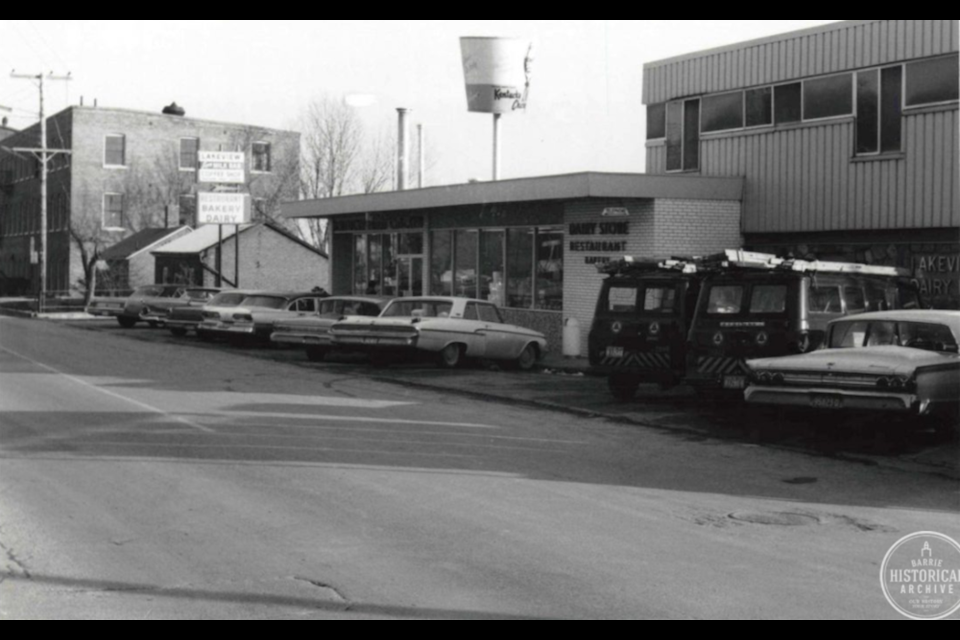Back in January 1957, the small meat-and-potatoes town of Barrie was slowly awakening to the idea of exotic international dishes. A tiny piece in the Barrie Examiner on the 9th of the month suggested that folks might want to try their familiar sardines in a novel way.
“A new and delicious way of serving these tasty, inexpensive little fish is in a pizza (pronounced peet-za) pie.” It is hard to imagine today, with a pizza place on nearly ever corner, that the concept and pronunciation had to be spelled out to the uninitiated, which included most of Barrie.
“We add that pizza is an Italian dish which is presently receiving acclaim on this side of the Atlantic. Basically, it consists of a circular yeast risen crust containing a highly seasoned cheese-tomato filling. It is served as a luncheon or supper dish and as a party snack.”
The first pizzas, as we know them today, were the traditional flat bread dishes of the city of Naples in Italy. It was there that the poorest of the people topped their creation with tomatoes, which had only been introduced in Europe in the late 1700s, and were still then considered to be inferior as a food item. Those same people brought their recipes with them when they emigrated to the U.S., and New York City had pizza vendors selling their wares for 2 cents a slice in the early 1900s.
It wasn’t until World War II that the appetite for pizza expanded to the rest of North America. Allied soldiers stationed in Italy were regular visitors to local bakeries and pizzerias and had a real desire to continue eating Italian food when they returned home. An industry was born.
Through most of the 1950s and into the 1960s, pizza remained as one of those “funny foreign foods,” as my father would say, and gained little traction in Barrie. The grocery stores sold Chef Boy-Ar-Dee pizza mixes for 49 cents a box, and the odd recipe popped up in the ladies’ column of the local newspapers. One writer suggested using hamburger buns as a base and topping the pizza with canned tomato, diced onions, green relish and a slice of cheese.
Mrs. Stella Saso shared her Italian cooking secrets with the Barrie Examiner on March 14, 1958. She explained how to make proper pizza dough from scratch, and suggested toppings like green onions, anchovies, sesame seeds, mushrooms and sausage. Her method was to roll out the risen dough and tuck the toppings into it, and then allow the dough to rise a little more. She baked the pizza for 30 minutes, sprinkled parmesan cheese on top, baked it for another 15 minutes, and then served it with hot pizza sauce on the side.
In 1962, the Lakeview Super Milk Bar on Dunlop Street East became one of the first of the local eateries to get on board the pizza popularity train. In April, they advertised a special on a large pepperoni and mushroom pizza with six cans of 7-Up for $1.40.
A year later, even the Fishnet, a seafood restaurant at 133 Dunlop St. E., was getting in on the game. Pizza and spaghetti were added to the menu. It wasn’t until 1966 that Barrie got its first exclusive Italian restaurant. Brothers-in-law Eugene Genovese and Tony Barbaro opened Pizzeria Italia at 18 Mulcaster St., a business that operates there still today, 52 years on.
By 1968, the Fishnet was gone and it was replaced by Bondi’s Famous Pizza, which was claiming to be “the biggest and the best in town” in Italian fare. Bondi’s had closed by 1970 and was replaced by Roberto’s Pizzeria. Firenze opened on Maple Street and boasted that it there was “no better dining anywhere.” Members of the Barbaro family opened Nino’s Italian Restaurant, another long-lived Italian eatery, in 1973. By now, it was apparent that pizza was in Barrie to stay.
Each week, the Barrie Historical Archive provides BarrieToday readers with a glimpse of the city’s past. This unique column features photos and stories from years gone by and is sure to appeal to the historian in each of us.



